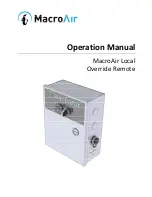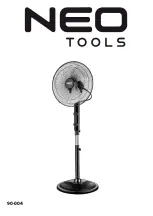
O
PERATING
E
NVIRONMENTS
6-2
www.zoll.com
906-0731-01-05 Rev. C
The primary effect of entrained particles is on the operation of the flow pneumotach used to
control the gas delivered to the patient. Dirt on the pneumotach screens affects the unit’s
calibration. Cleaning the screens requires a biomedical technician to disassemble the device
and ultrasonically clean the screens. Using a filter in dusty environments prevents having to
remove the unit from service for cleaning. In addition to using the filter, you can also keep the
unit in the soft case, which will protect the unit case and the LCD from being scratched or
damaged. It is also easier to clean the padded case following use in a dusty/dirty environment
than the device.
Extreme Temperature Environments
Traditional transport ventilators typically operate from 0
to 40
C (32
to 104
F). The ZOLL
Ventilator can operate over the range of -25
to 49
C (-13
to 120
F) during emergency
situations.
Operating at High Temperatures
When operating the ventilator at high temperatures, you may observe alarm conditions
associated with Li-ION battery performance:
Charging
-- If operating using external power, the unit may issue an alarm when the battery
reaches its high charge temperature limit of 45
C.
Discharging
-- If operating using external power, the unit may issue an alarm when the battery
reaches its high discharge temperature limit of 49
C.
Compliance is a physical characteristic of the ventilator that varies with temperature. The
circuit becomes more compliant as the temperature rises. The ZOLL ventilator allows you to
increase the compliance value when operating in hot environments.
When operating at high temperatures, you should remove the unit from its padded case, which
allows the unit to pass heat into the surrounding environment.
Operating at Low Temperatures
When operating the ventilator at low temperatures, you may observe alarm conditions
associated with Li-ION battery performance:
Charging
-- If operating using external power, the unit may issue an alarm when the battery
reaches its low charge temperature limit of 0
C.
Discharging
-- If operating using external power, the unit may issue an alarm when the battery
reaches its low discharge temperature limit of -25
C.
Compliance is a physical characteristic of the ventilator that varies with temperature. The
circuit becomes less compliant as the temperature drops. The ZOLL ventilator allows you to
decrease the compliance value when operating in cold environments.
Valve operating performance can be affected by extremely low temperatures. Consequently, at
low temperatures, you should monitor the patient to ensure that the patient is receiving
adequate tidal volume and monitor the patient’s SpO
2
readings.
When operating at low temperatures, you can improve performance by operating the unit in the
padded case, which insulates the unit and allows it to retain heat generated by the compressor,
circuit boards, and AC/DC Power Supply.
















































